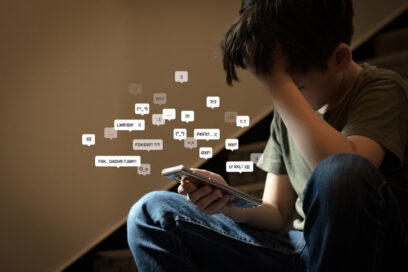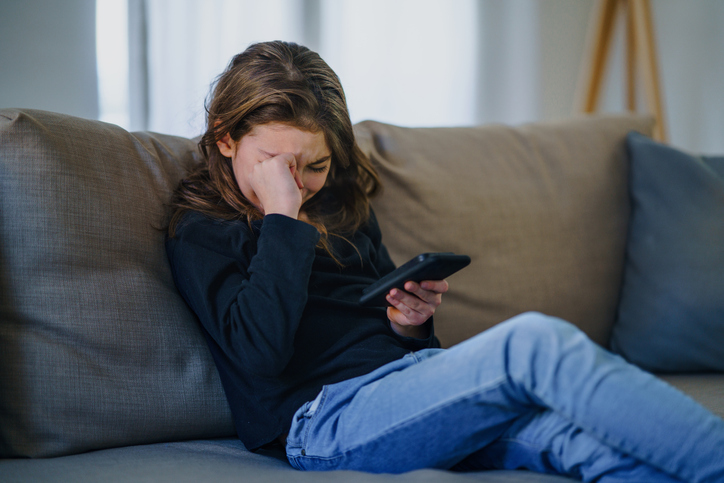We’ve recently seen tremendous media coverage of the CEOs of Meta, TikTok, X and other social media companies testifying to the US Senate about the damage social media has caused children. These negative effects on their mental health have increased the urgency for action by policymakers and technology companies. Recommendations include strengthening safety standards, promoting digital literacy and encouraging responsible online behavior to foster safer and healthier online environments for children.
In the midst of the judiciary hearings, schools are taking action too. Hundreds of districts are filing lawsuits against social media companies, alleging that the marketing and design of their addictive platforms contribute to a growing youth mental health crisis.
The lawsuits over social media harm seek accountability, financial compensation and changes to the companies’ practices. Districts aim to raise public awareness and impose regulatory changes for social media companies. Even the mayor of New York is suing the social media giants, alleging that they intentionally design their platforms to manipulate and addict children and teens.
Social media harm is nothing new
While this fresh attention may be welcomed by mental health advocates, educators and families, the problems have persisted for years. Concerning trends dating back to 2011 emerged in a paper that sounded the early alarm bells. This suggested that social media harmed children. Further evidence in 2016 corroborated the growing concern.
In 2019, another powerful yet fairly conspicuous study, Instagram vs. Reality, illustrated how body image for women, based on comparison to idealistic images online, were causing harm. This study revealed frequent Instagram users made negative social comparisons when exposed to edited, idealized photos of influencers and peers, resulting in lower self-esteem and body image.
And year after year, the evidence piled on.
The merits of why it took years of mounting evidence to gain political traction can be easily debated. Yet what is more significant and urgent for practitioners like me and our school communities is to seize on the momentum of national attention to build awareness and strategies to aid the children and families overcoming the damaging effects of adverse social media exposure.

Social media harm can affect social development
The evidence reveals how social media misuse can severely disrupt focus, well-being and healthy social development in growing minds and bodies. The temptation of social media is so strong that it snatches precious time away from essential developmental opportunities like academic activities, exercise and crucial face-to-face interactions. Excessive interruptions impede the ability to concentrate productively on tasks.
Some of my previous articles for SmartBrief have referred to some of the challenges and solutions. This includes evidence that engaging in toxic social spaces can make us less intelligent due to diminished attention and memory, essentially eroding the cognitive skills that are indispensable for learning.
As educators and families, we have little control over the emerging legal repercussions. Our power lies in seizing the media attention and riding the wave of momentum to help children. The need for greater awareness about social media harm and more authentic social media portrayals can help mitigate potential effects.
How schools can capitalize on negative news on social media
An Australian study examined the social media activities of students before, during and after they received explicit instruction regarding the repercussions of online misbehavior. Researchers found that implementing a proactive educational approach resulted in substantial and enduring decreases in students’ perceptions of online anonymity and their tendency to engage in toxic online behavior.
Remarkably, reductions were sustained in the study participants, extending well beyond the immediate moment, ultimately fostering ongoing improvements in long-term decision-making for their online conduct. Teaching children to consciously see the risks of bad online behavior and the choices they make has an impact.
This study offers a roadmap for schools that want to structure targeted exercises to help students awaken that consciousness. It also provides a prescription for alternatives that, at a minimum, reverse the impact of disruptions and, at a maximum, reduce tragic circumstances for children who feel they have no way out.
I have written previously about simple, practical techniques that educators and families might implement to minimize the effects of social media harm. Strategies like listening to coffeehouse chatter and binaural beats aim to target a learner’s focus through stimuli that tunes the auditory nerve wired to the brain. Additionally, like the Australian study, teaching the effects of the online disinhibition effect, a phenomenon that segregates our real selves from a far worse online version, exposes the contrast for students.
Conscious awareness strategies
Educators can aim for a proactive reversal of social media harm by engaging students in guided scenarios in class, demonstrating examples of damage caused by bad online behavior and rehearsing alternatives. Educators also can help students shift their behavior by showing them how poor online behavior can affect goals, dreams and aspirations. One persuasive example demonstrates how bad online behavior by students who had originally been accepted to an Ivy League school resulted in their acceptance being revoked when the college discovered their online misconduct. Plenty of other proactive methods are available.
Students can build focus and flow needed to learn, grow and thrive — even in today’s disruptive digital world. The solutions lie in strengthening their self-awareness and providing mind-focusing tools so students can gain control of their online selves. Building good habits takes repetition — and each small win compounds.
Let’s empower children to find focus and meaning amid the social media chaos surrounding them. Even more significantly, teach these methods to help them avoid the trauma, stress and anxiety — and devastating repercussions shared recently in the Senate — that too many students experience. We owe it to our children, and recent media exposure provides the vehicle to seize on the moment.
